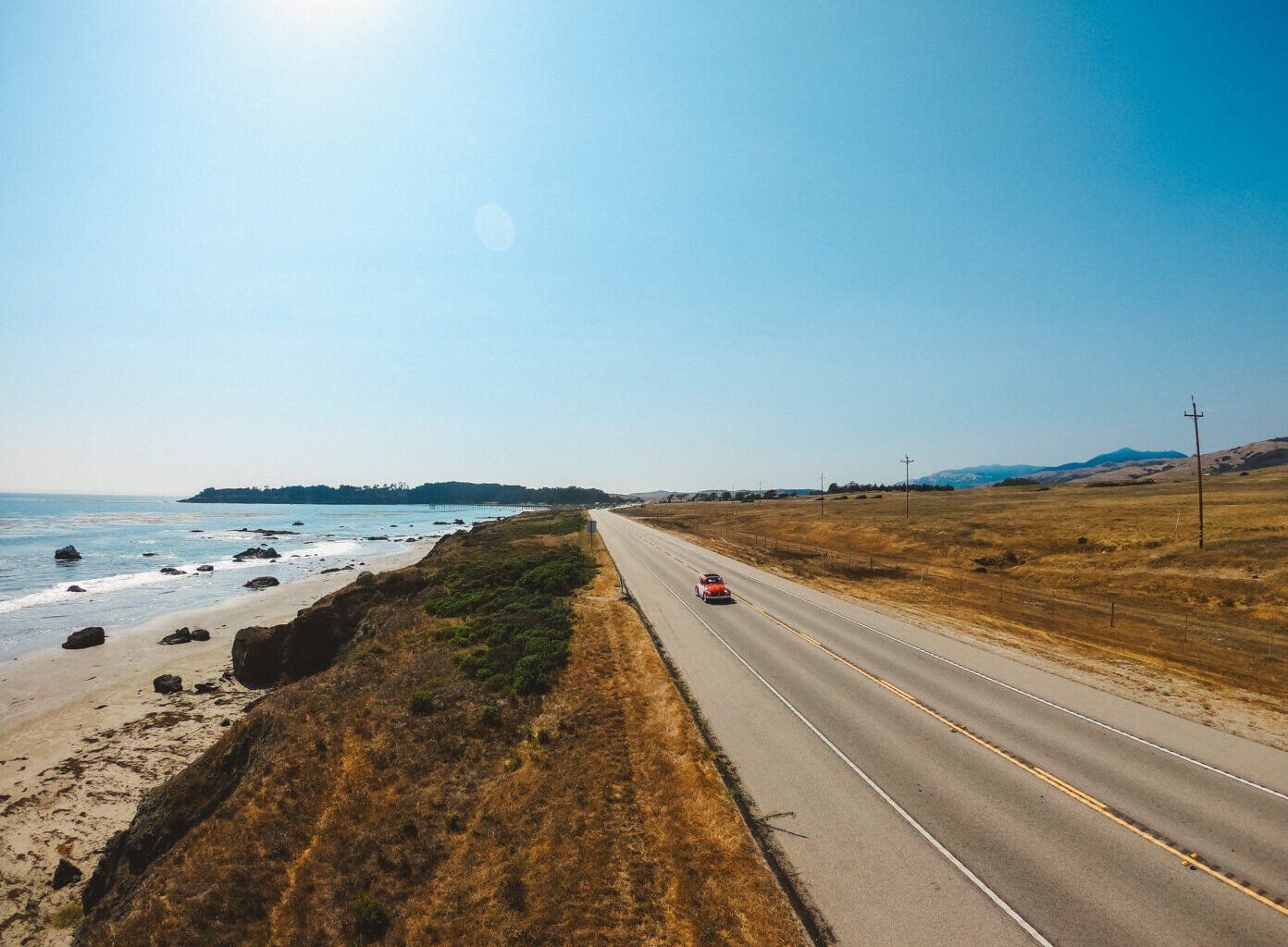Anyone who’s lived in SoCal for more than five years knows that there’s no better meeting point for friends in the Bay Area than California’s Central Coast. In fact, the rugged coastline, diverse wineries, antique shops, and quaint eateries of Cambria, Paso Robles, and San Simeon were the draw for many of our family getaways through the years. We had always headed to the cozy, fireplace-enhanced, woodsy motels on Moonstone Beach—just down the road from Hearst Castle. But this time, two long-time gal pals from the Bay Area invited me to join them for a three-day getaway to explore places in the Central Coast that I’d never been to: Cayucos, Santa Maria Valley, and Nipomo.
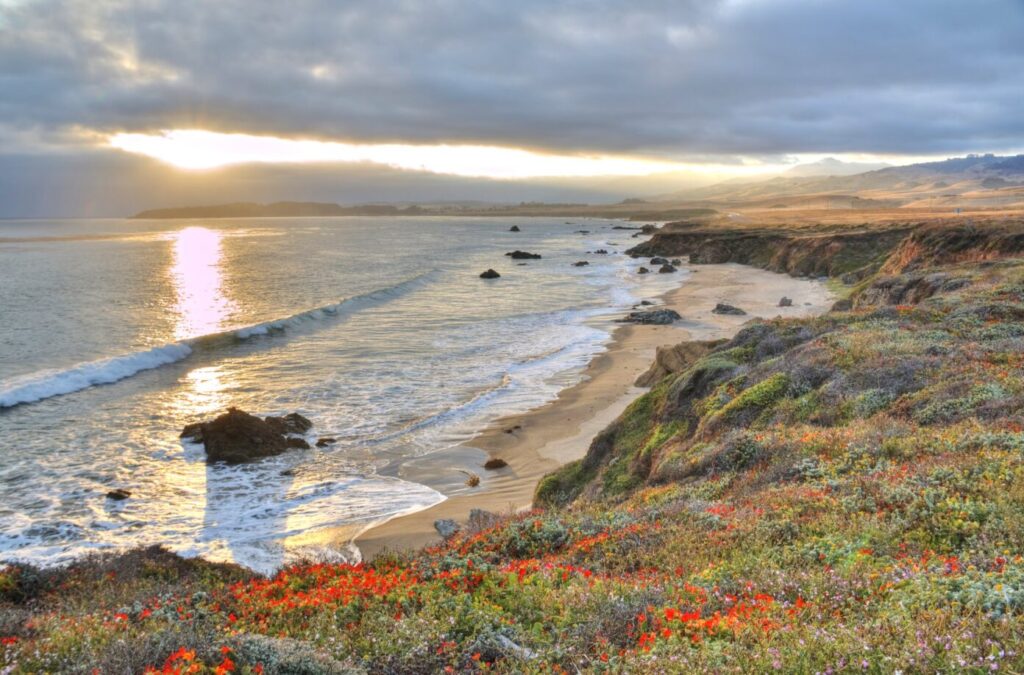 Ragged Point, San Simeon Coastline. (Photo courtesy of Highway 1 Road Trip)
Ragged Point, San Simeon Coastline. (Photo courtesy of Highway 1 Road Trip)
I hadn’t really traveled for fun since Los Angeles’s January wildfires in the Pacific Palisades left us scrambling for permanent housing. But after finally settling in a cozy, water-facing apartment in Marina del Rey, I felt ready to go North to the wilder but calmer coast. The four-hour drive flew by with the help of my favorite podcasts and a highly recommended new audiobook.
First Stop: Cayucos
The meeting point for this “Girl Power” themed trip was a lovely midway mark: the quaint, seaside village of Cambria.
We dined at the women-owned, farm-to-table Brydge Restaurant, which repurposed the historic Williams/Thorndyke/Bright house. They describe their eatery as “bridging connections to the earth, our community” and their seasonal menu as “capturing the best of the organic farming community blooming…across the Central Coast” Our selections: Red Beets with Pluots, Oranges, Chevre; Heirloom Polenta with Cultivated Mushrooms; and Cast Iron Quail with Chard & Italian Peppers. It did not disappoint.
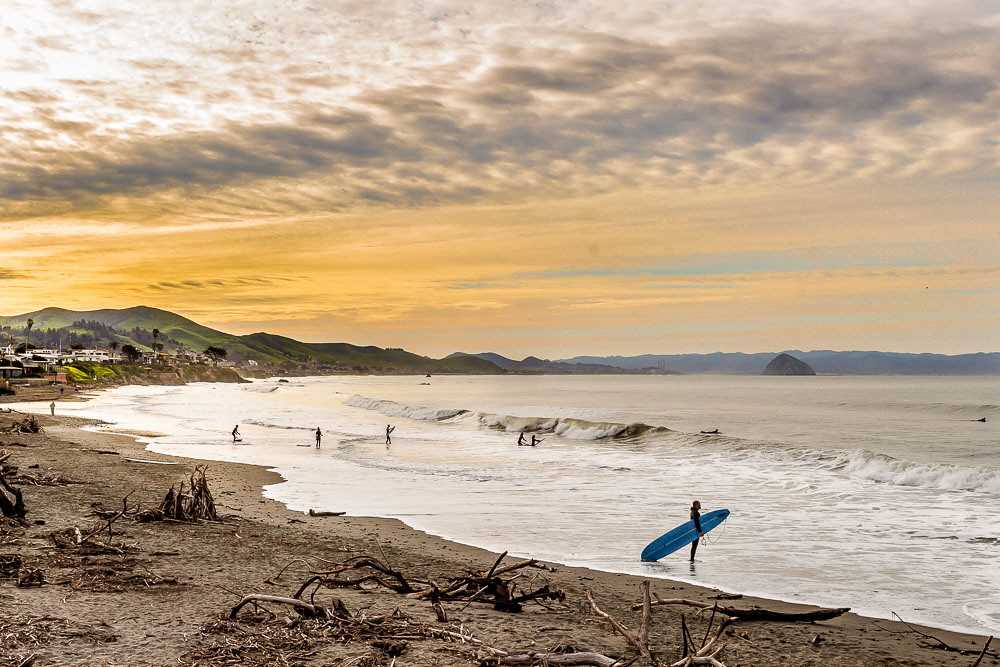 Cayucos, CA, in winter. (Photo by Danna Dykstra-Coy / Highway 1 Road Trip)
Cayucos, CA, in winter. (Photo by Danna Dykstra-Coy / Highway 1 Road Trip)
Our first night’s lodging turned out to be a delightful choice: The Pacific Motel in Cayucos. It’s a hip, design-forward, 1950s roadside motel reborn under the guidance of owners Ryan and Marisa Fortini, founders of a local landscaping design company, who made the beachy inn just quaint and quirky enough to be irresistible. The August 2025 issue of Travel & Leisure underscored Cayucos’ description as “California’s last great beach town,” and touted its dog-friendly state beach, hiking trails and lack of crowds. To me, it simply felt like Old California and a best-kept secret just waiting to be discovered.
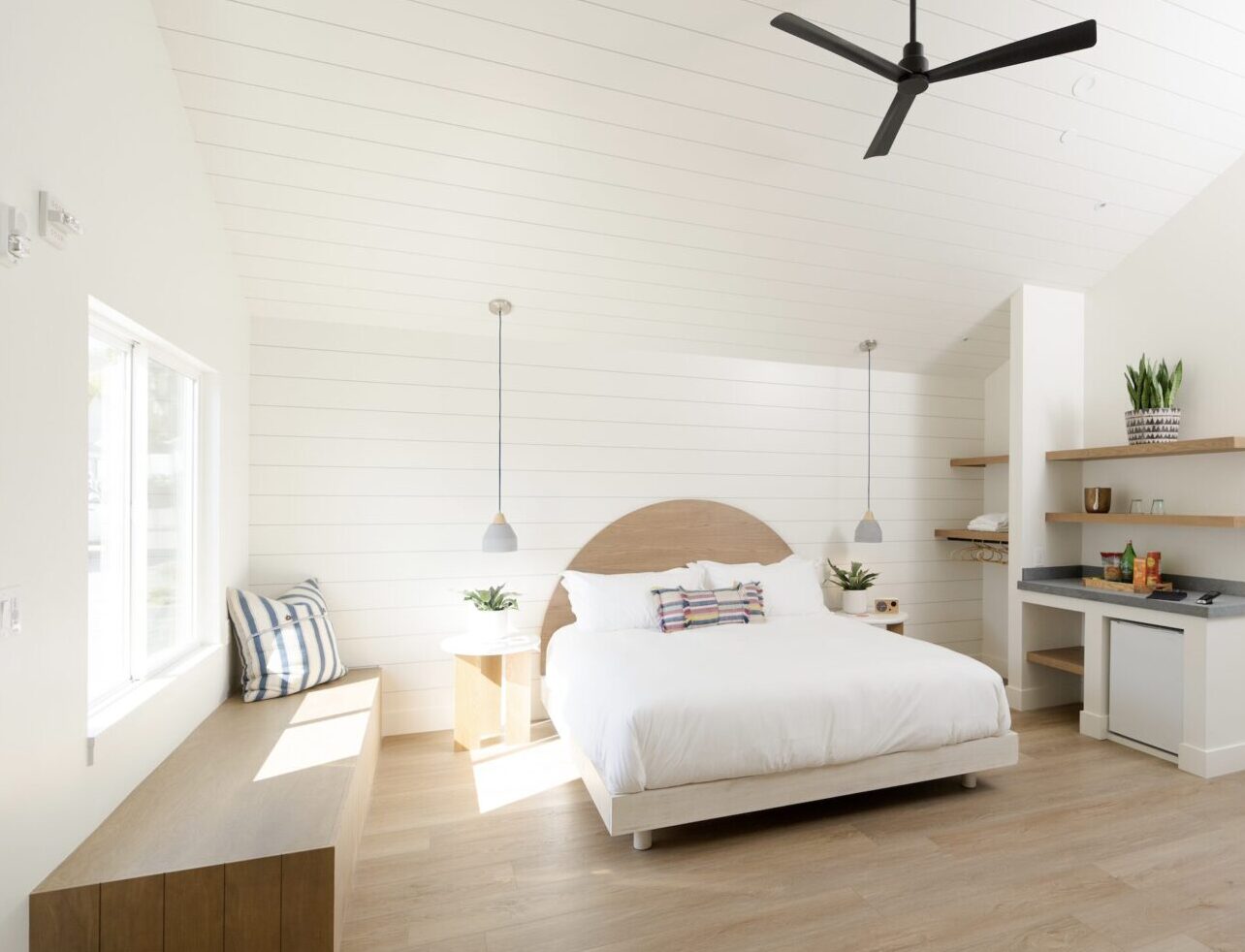 A room at The Pacific Motel. (Photo courtesy of Highway 1 Road Trip)
A room at The Pacific Motel. (Photo courtesy of Highway 1 Road Trip)
The next morning, we took a ten-minute walk along the main drag to the indoor/outdoor Luna Coffee Bar, a family-owned breakfast stop whose creamy rich latte and house made cherry cheese Danish made me sing.
Next up, we traded land for water with a kayaking trip through Avila Beach Paddlesports, a wonderful little company run by a mother-and-daughter team. Our guides—two enthusiastic Cal Poly students—led the way, and our group happened to include a lively bunch of women who’ve been taking annual adventures together ever since finishing nursing school in the late ’80s. Out on the water, we paddled past floating “rafts” of sea otters (who knew that’s the official term?), and learned that females keep their distance from the males except during mating season (a philosophy I admire).
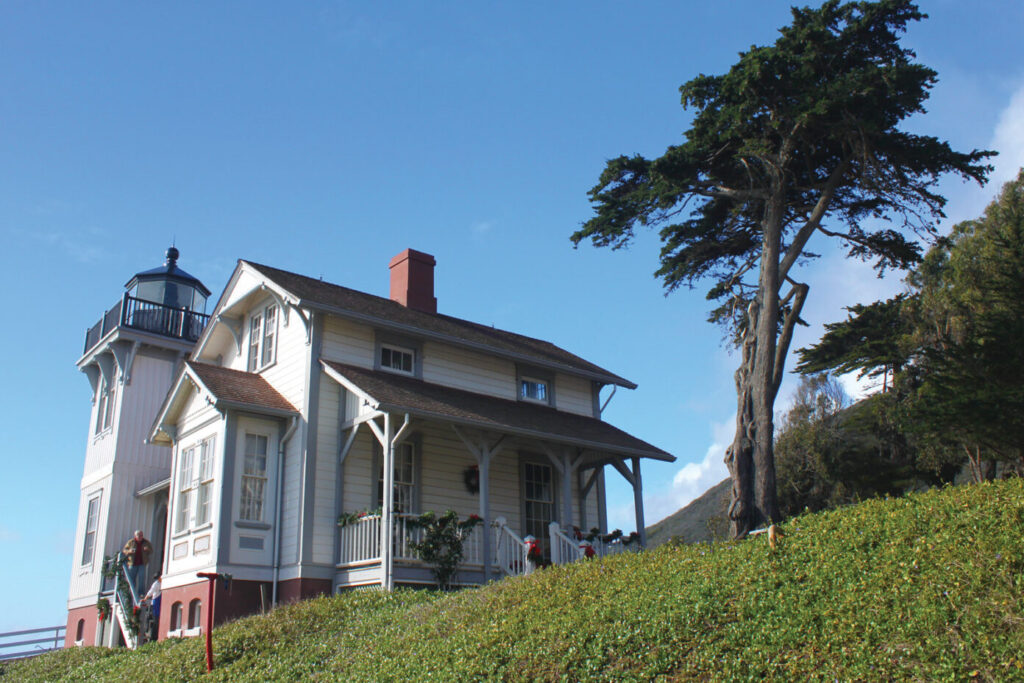 Avila Beach Port San Luis Lighthouse. (Photo courtesy of Highway 1 Road Trip)
Avila Beach Port San Luis Lighthouse. (Photo courtesy of Highway 1 Road Trip)
Along the way we waved to sea lions lounging on buoys and beneath the pier, before passing a guano-dusted rock that marked our approach to the shore. Waiting for us up the trail was the charming Point San Luis Lighthouse, a Victorian gem built in 1890 and now beautifully restored as a national landmark and museum—a destination-with-a-view that gave our paddle the perfect sense of purpose.
After kayaking our way back to the pier, my friends and I bid adieu to the grandma, mama, and baby girl behind the three-generation enterprise that had provided such a sense of accomplishment and adventure for us.
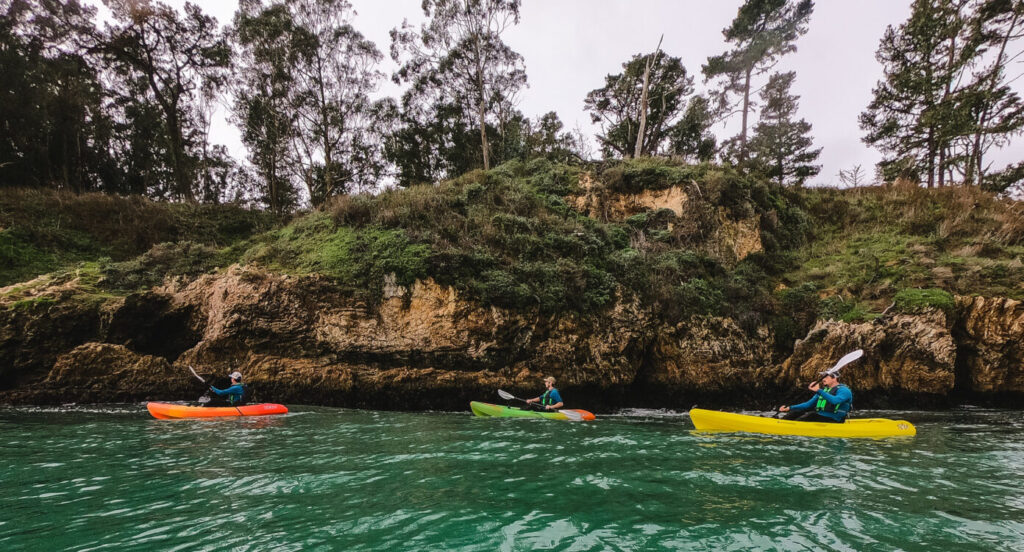 Photo courtesy of Highway 1 Road Trip
Photo courtesy of Highway 1 Road Trip
We lunched on the ocean-facing, outdoor patio of Blue Moon Over Avila. Despite being in the midst of some of the most popular wineries in the state, one of my pals ordered a “beer float” with lager and vanilla ice cream, and I had a Port Spritzer called a “Lisbon!” Yum!
The afternoon featured a “first” for me: a vineyard tour in the sidecar of a motorcycle! It’s a bit disconcerting to realize that your capsule-of-a-seat is only connected to the bike by rods and bolts, but our dapper drivers—two retirees—looked like they had things under control. Now, helmets are not my hat of choice for wine country, but they served a smart purpose and there was even a basket to stash the straw hat that I changed into at the wineries. While not imbibing in the fruit of the vine—a sacrifice the gents made for our safety—our drivers were gifted conversationalists, and the afternoon was a hit.
A Stay in Santa Maria Valley
That evening we checked into the Avila Inn, just off Highway 101—a charming Cape Cod–style retreat that felt expansive despite offering only 30 guest rooms. The inn’s private club atmosphere, complete with tennis courts, access to the scenic Bob Jones City-to-Sea Trail, and proximity to Sycamore Hot Springs, gave it a sense of scale beyond its size. Dinner was at the Gardens of Avila Restaurant, tucked within the Sycamore Mineral Springs Resort & Spa, where locally sourced beets and Brussels sprouts stole the show during our alfresco meal.
The next morning started with a stop at Kraken Coffee Company back on Avila Beach—because I will get up and drive for good coffee. From there, we made our way back to the Sycamore Mineral Springs Resort & Spa for yoga in their hilltop geodesic dome, which was every bit as magical as it sounds. After class, I slipped into a covered, private mineral spring tub located up winding wooden stairs among the trees. Sitting back in the warm water, surrounded by nature, I couldn’t help but think that the $60 price tag for yoga and a soak was another great find.
No day in wine country feels complete without a vineyard stop, and ours led us to Riverbench Winery, founded in 1973 in the heart of Santa Maria Valley. Renowned for its award-winning chardonnay and pinot noir, the winery is guided by powerhouse female winemaker, Clarissa Nagy. We settled at a wooden table outside beneath towering trees, each of us savoring a different tasting flight, and let the gentle breeze rustling through the leaves carry away the weight of the world.
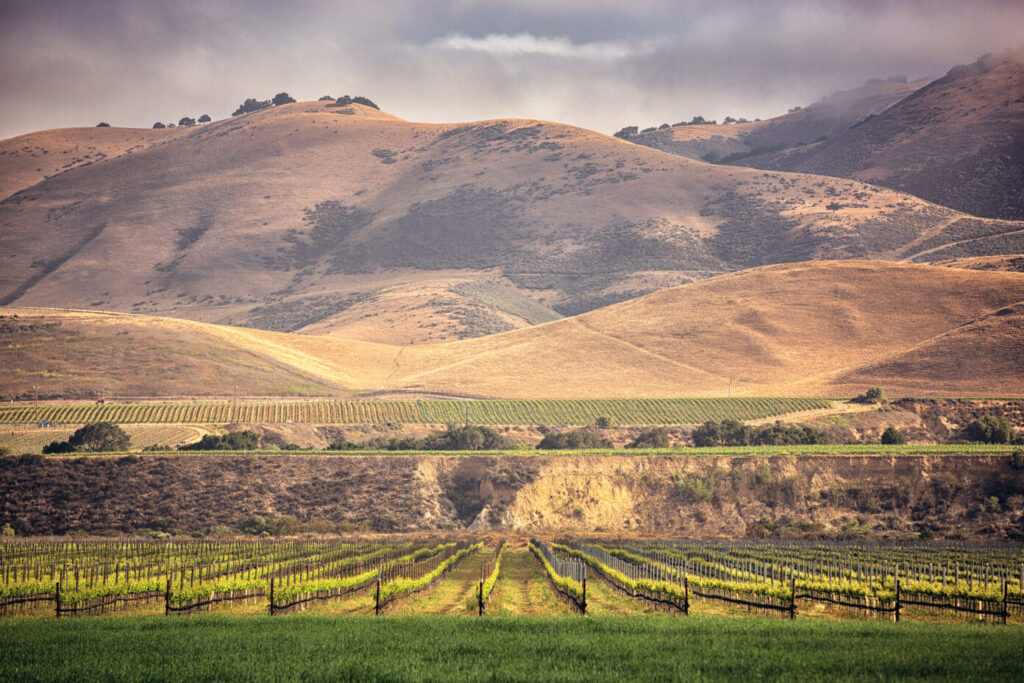 Riverbench Winery. (Image courtesy of Visit Santa Maria Valley)
Riverbench Winery. (Image courtesy of Visit Santa Maria Valley)
Our final day was a surprise—starting with the tiny, home spun, antique-forward town of Orcutt, where we stopped for house made sweets at Gina’s Piece of Cake. Our choice: a carrot cake muffin and layered strawberry shortcake cup to share. We stayed at the Santa Maria Inn, a registered historic landmark opened in 1917 with its own speakeasy called The Barrel Room. While rather long in the tooth overall, the hotel booked us each in upper floor suites with lots of natural light.
Coming from a background in spas and wellness, I’m not exactly known as a carnivore—but every now and then, I make an exception. Dinner at Shaw’s Famous Steakhouse turned out to be one of those nights, and it more than lived up to its reputation as a showcase for the classic Santa Maria BBQ style. The secret: a rub of just salt, pepper, and garlic—originally used just on tri-tip—and cooked over red oak chips. Watching the open kitchen in action made the experience even better. I went with a petit filet mignon done in the famous BBQ style, a green salad, a giant baked potato, and some dangerously good grilled bread—and, to my surprise, I polished off every bite. A glass or two of local cabernet made it all go down even easier. The only thing I couldn’t make room for? Their famous pinquito beans, using a bean only grown in that valley and simmered with bacon, onion, and tomatoes.
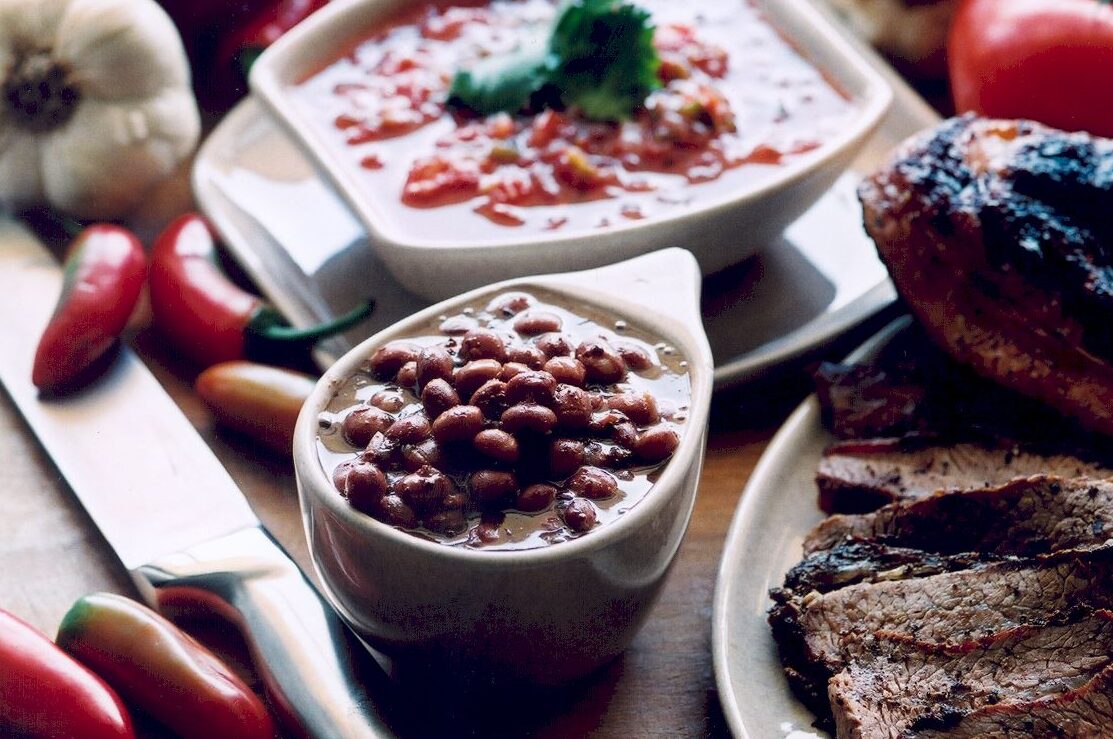 A close up shot of the deliciousness at Shaw’s Famous Steakhouse. (Photo courtesy of Visit Santa Maria Valley)
A close up shot of the deliciousness at Shaw’s Famous Steakhouse. (Photo courtesy of Visit Santa Maria Valley)
I didn’t think I could or should eat another bite the next morning, but an invitation to Crumbles Café and Bake Shop was a bit too much to resist. The baker has been perfecting his craft there for 25 years, and the manager—who could have been the twin of the Six Flags mascot, Mr. Six—gave us a genuinely warm welcome. He shared that their most popular pies were strawberry (locally grown) and banana cream, but I couldn’t pass up the blueberry peach crumble pie, served à la mode. One spoonful in, and I knew I’d made the right choice.
The Final Stop: Nipomo
Before heading home, we made one last stop at The Luffa Farm in Nipomo—yet another female-owned business in the Central Coast. Touring the greenhouse, we learned that luffas aren’t sea sponges at all but dried gourds that grow on the vine, looking a bit like oversized zucchinis.
Our guide walked us through the process of knowing when they’re ready, how the skin and seeds are removed by hand, and all the surprising ways you can use them—everything from gentle face exfoliation to scrubbing pots and pans. (Fun fact: they’re even dishwasher safe!) The gift shop was brimming with handmade luffas for bath and kitchen, along with plenty of earthy treasures. Naturally, I couldn’t resist leaving with a bag full of goodies.
My takeaway: There’s a reason the tourism websites for Highway 101 and Santa Maria look so down-to-earth and authentic. They really do mirror the destinations.
Plan your own road trip along California’s Central Coast with Highway 1 Road Trip
Travel Safely Along Highway 1 Information
New Coastal Discovery Trail Map
Cover image credit: Highway 1 Road Trip
Don’t Miss

